ELAR 1.2
Developing and sustaining foundational language skills: listening, speaking, reading, writing, and thinking--beginning reading and writing. The student develops word structure knowledge through phonological awareness, print concepts, phonics, and morphology to communicate, decode, and spell. The student is expected to:
- (1) demonstrate phonological awareness by:
- (A) producing a series of rhyming words;
- (i) recognizing spoken alliteration or groups of words that begin with the same spoken onset or initial sound;
- (ii) distinguishing between long and short vowel sounds in one-syllable words;
- (iii) recognizing the change in spoken word when a specified phoneme is added, changed, or removed;
- (iv) blending spoken phonemes to form one-syllable words, including initial and/or final consonant blends;
- (v) manipulating phonemes within base words; and
- (vi) segmenting spoken one-syllable words of three to five phonemes into individual phonemes, including words with initial and/or final consonant blends;
- (vii) demonstrate and apply phonetic knowledge by:
- (B) decoding words in isolation and in context by applying
common letter sound correspondences;
- (i) decoding words with initial and final consonant blends, digraphs, and trigraphs;
- (ii) decoding words with closed syllables; open syllables; VCe syllables; vowel teams, including vowel digraphs and diphthongs; and r-controlled syllables;
- (iii) using knowledge of base words to decode common compound words and contractions;
- (iv) decoding words with inflectional endings, including -ed, -s, and -es; and
- (v) identifying and reading at least 100 high-frequency words from a research-based list;
- (vi) demonstrate and apply spelling knowledge by:
- (C) spelling words with closed syllables, open syllables,
VCe syllables, vowel teams, and r-controlled syllables;
- (i) spelling words with initial and final consonant blends, digraphs, and trigraphs;
- (ii) spelling words using sound-spelling patterns; and
- (iii) spelling high-frequency words from a research-based list;
- (iv) demonstrate print awareness by identifying the information that different parts of a book provide;
- (D) alphabetize a series of words to the first or second letter and use a dictionary to find words; and
- (E) develop handwriting by printing words, sentences, and answers legibly leaving appropriate spaces between words.
- (A) producing a series of rhyming words;
- Plus Plan
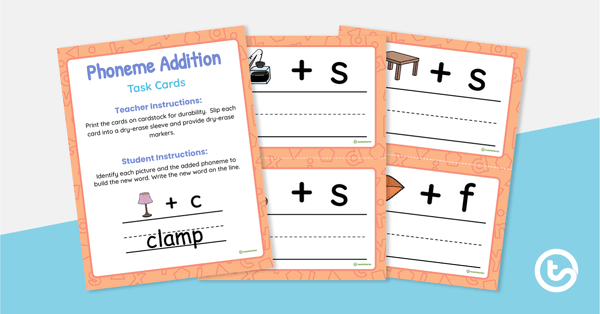
Phoneme Addition Task Cards
Explore phoneme addition with your students with this set of 16 task cards.
- Plus Plan
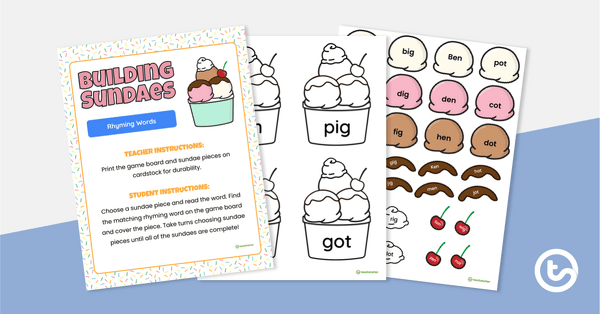
Building Sundaes - Rhyming Words
Practice rhyming with this dessert-themed game.
- Plus Plan
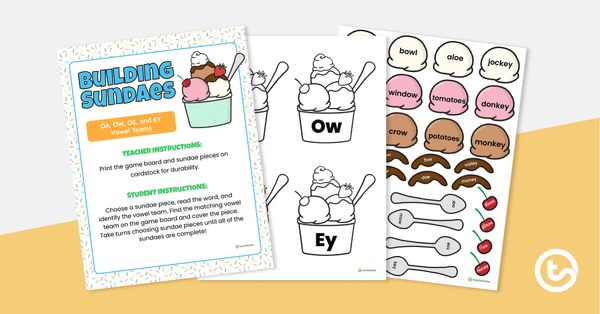
Building Sundaes Game - Vowel Teams (OA, OW, OE, and EY)
Decode words with OA, OW, OE, and EY long vowel teams by crafting cute desserts!
- Plus Plan
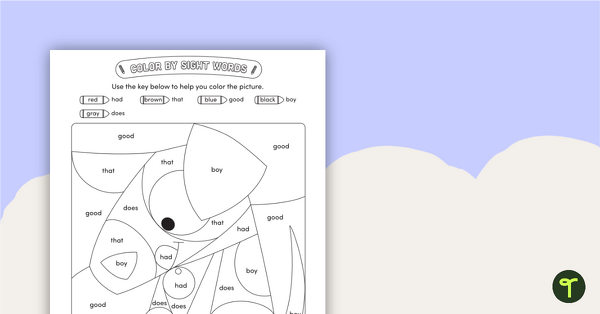
Color by Sight Words - 5 Words - Dog
A fun coloring activity to use when working with sight words.
- Plus Plan
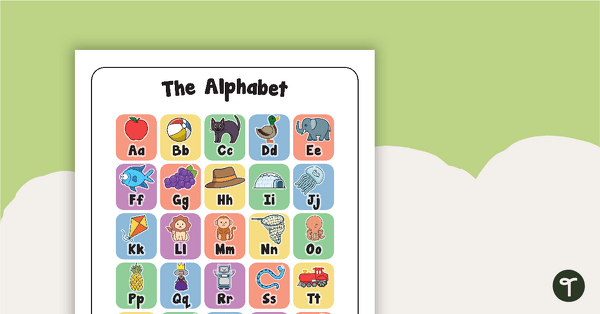
Alphabet Display Poster
A bright and colorful poster to display when introducing the letters of the alphabet.
- Plus Plan
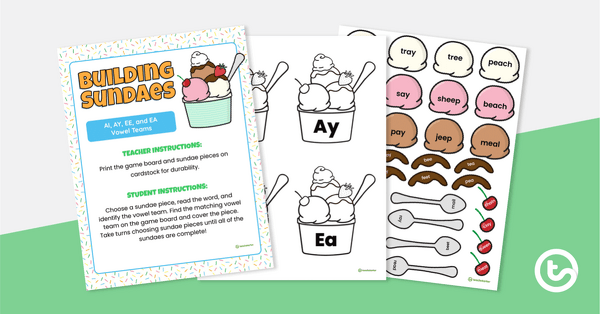
Building Sundaes Game - Vowel Teams (AI, AY, EE, and EA)
Decode words with ay, ai, ea, and ee long vowel teams by crafting cute desserts!
- Plus Plan
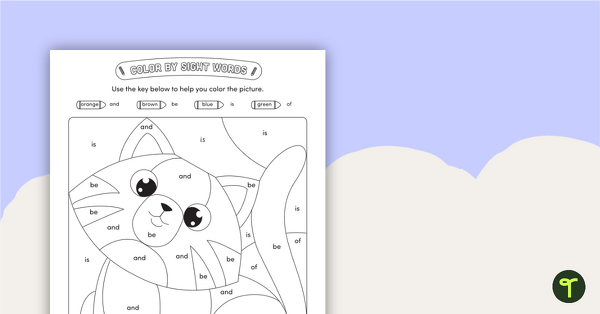
Color by Sight Words - 4 Words - Cat
A fun coloring activity to use when working with sight words.
- Plus Plan
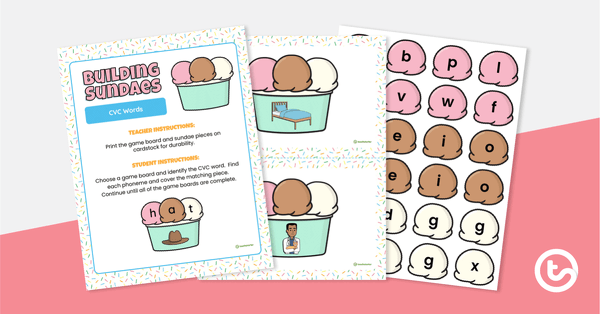
Building Sundaes Game - CVC Words
Segment CVC words with this set of 14 spelling cards.
- Plus Plan
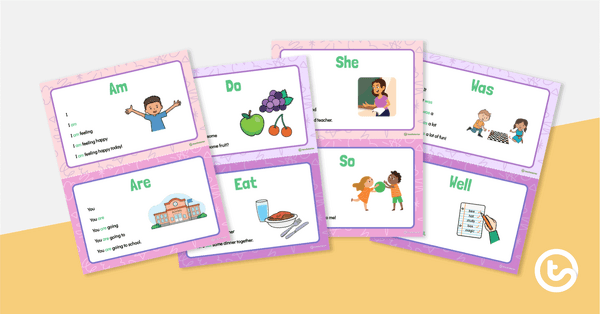
Pyramid Reading Cards - Dolch Primer Sight Words
Practice and review the Dolch Primer List of high-frequency words with 52 short phrase cards for emergent readers.
- Plus Plan
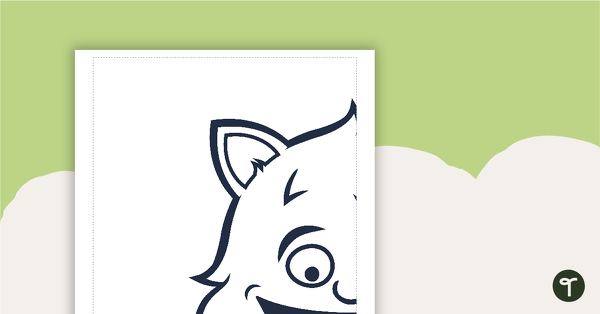
Curious Creature Create-a-Book-Cover Template
A template to help students create a curious creature book cover.
- Plus Plan
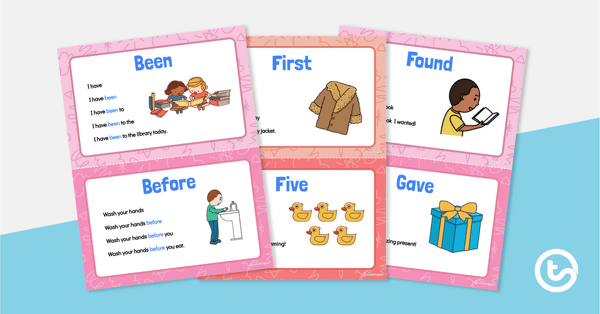
Pyramid Reading Cards - Dolch 2nd Grade Sight Words
Practice reading Dolch's 2nd Grade Sight Words with a set of 44 pyramid sentence cards.
- Plus Plan

It's My Time to Rhyme Worksheet
Practice producing rhyming words with this 2-page multi-challenge worksheet.
- Plus Plan
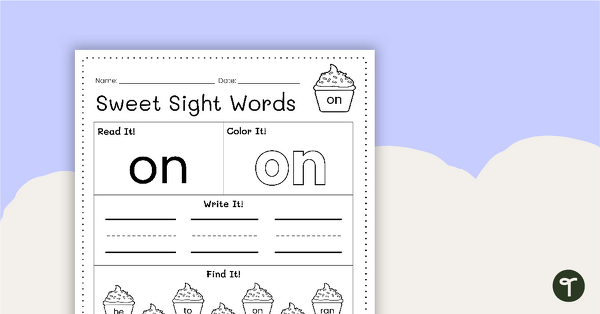
Sweet Sight Words Worksheet - ON
Practice reading, writing, and identifying the high-frequency word “on” from the Kindergarten-level Dolch sight words list.
- Plus Plan
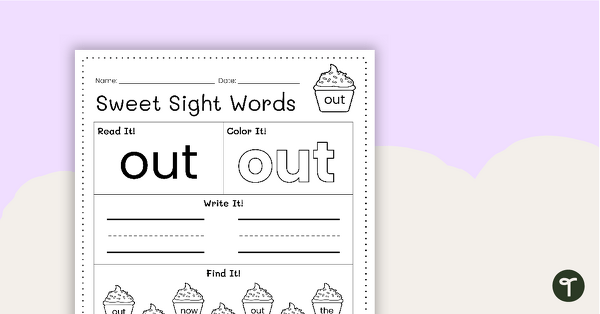
Sweet Sight Words Worksheet - OUT
Practice reading, writing, and identifying the high-frequency word “out” from the Kindergarten-level Dolch sight words list.
- Plus Plan
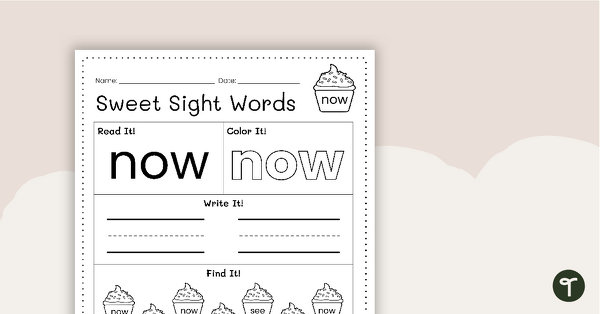
Sweet Sight Words Worksheet - NOW
Practice reading, writing, and identifying the high-frequency word “now” from the Kindergarten-level Dolch sight words list.
- Plus Plan
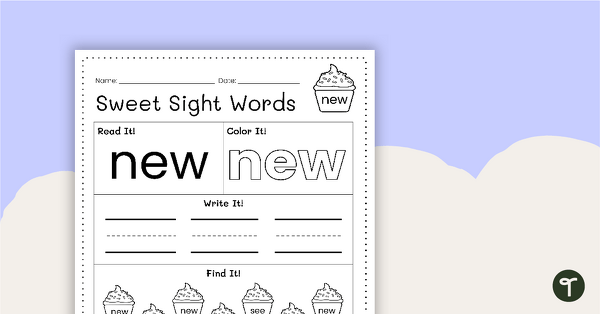
Sweet Sight Words Worksheet - NEW
Practice reading, writing, and identifying the high-frequency word “new” from the Kindergarten-level Dolch sight words list.
- Plus Plan
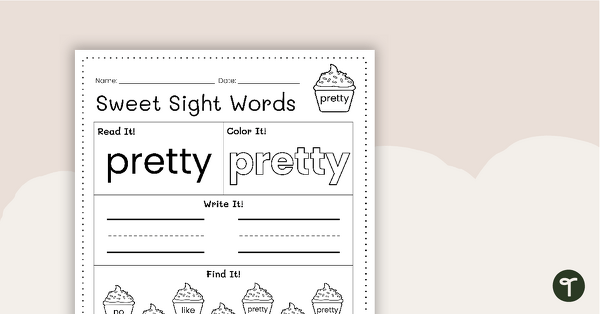
Sweet Sight Words Worksheet - PRETTY
Practice reading, writing, and identifying the high-frequency word “pretty” from the Kindergarten-level Dolch sight words list.
- Plus Plan
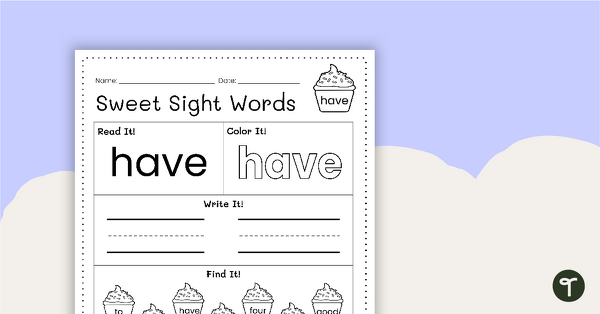
Sweet Sight Words Worksheet - HAVE
Practice reading, writing, and identifying the high-frequency word “have” from the Kindergarten-level Dolch sight words list.
- Plus Plan
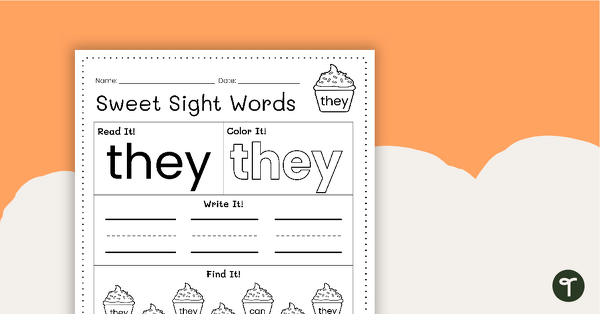
Sweet Sight Words Worksheet - THEY
Practice reading, writing, and identifying the high-frequency word “they” from the Kindergarten-level Dolch sight words list.
- Plus Plan
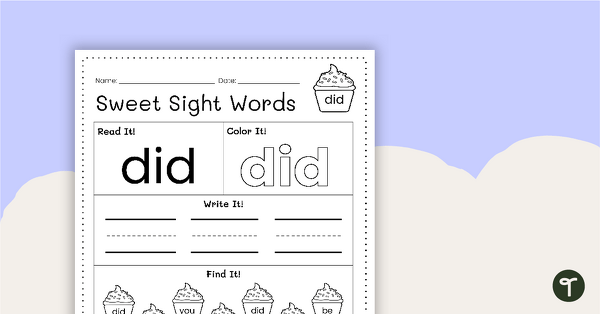
Sweet Sight Words Worksheet - DID
Practice reading, writing, and identifying the high-frequency word “did” from the Kindergarten-level Dolch sight words list.
- Plus Plan
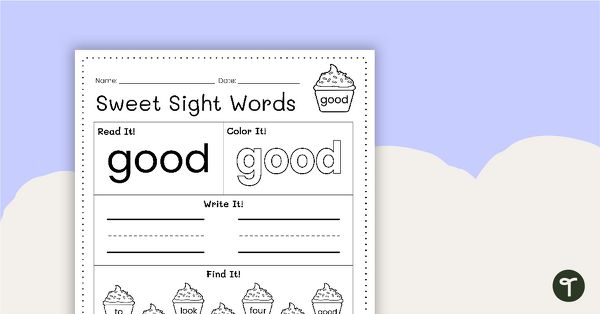
Sweet Sight Words Worksheet - GOOD
Practice reading, writing, and identifying the high-frequency word “good” from the Kindergarten-level Dolch sight words list.
- Plus Plan
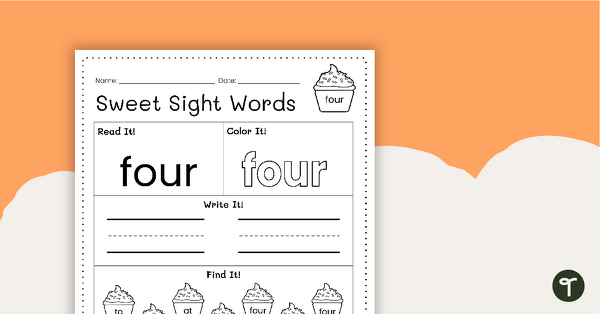
Sweet Sight Words Worksheet - FOUR
Practice reading, writing, and identifying the high-frequency word “four” from the Kindergarten-level Dolch sight words list.
- Plus Plan
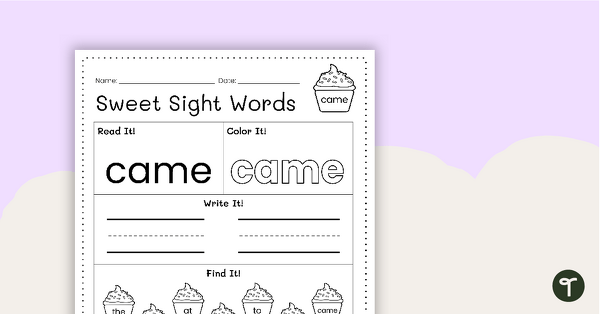
Sweet Sight Words Worksheet - CAME
Practice reading, writing, and identifying the high-frequency word “came” from the Kindergarten-level Dolch sight words list.
- Plus Plan
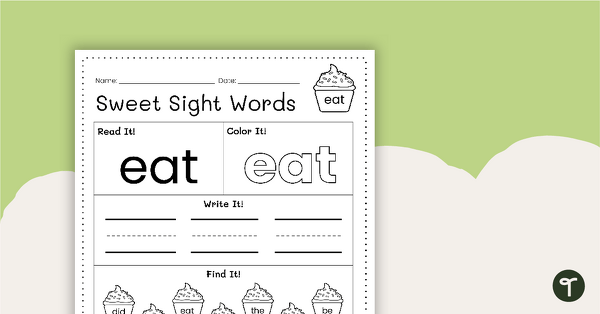
Sweet Sight Words Worksheet - EAT
Practice reading, writing, and identifying the high-frequency word “eat” from the Kindergarten-level Dolch sight words list.
- Plus Plan
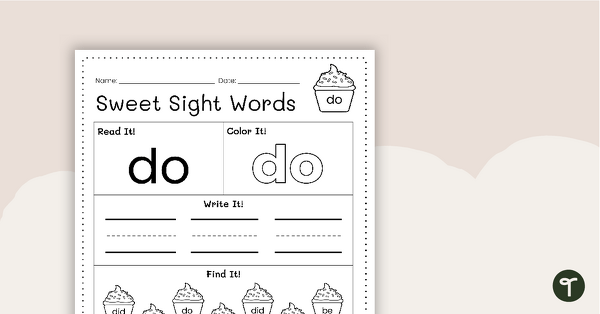
Sweet Sight Words Worksheet - DO
Practice reading, writing, and identifying the high-frequency word “do” from the Kindergarten-level Dolch sight words list.
- Plus Plan
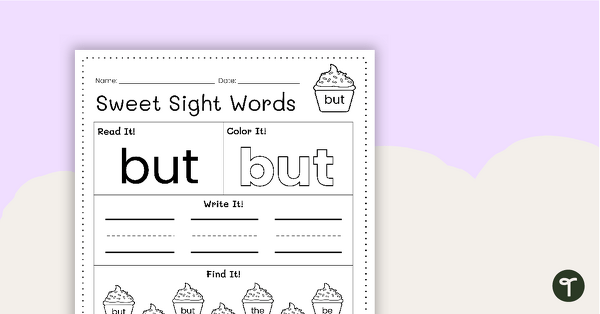
Sweet Sight Words Worksheet - BUT
Practice reading, writing, and identifying the high-frequency word “but” from the Kindergarten-level Dolch sight words list.
- Plus Plan
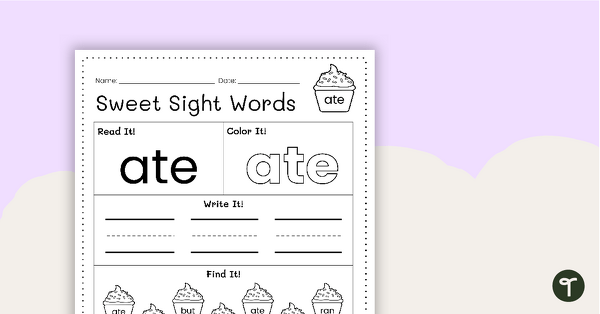
Sweet Sight Words Worksheet - ATE
Practice reading, writing, and identifying the high-frequency word “ate” from the Kindergarten-level Dolch sight words list.
- Plus Plan
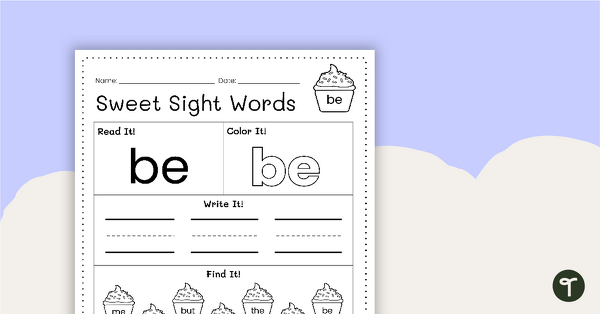
Sweet Sight Words Worksheet - BE
Practice reading, writing, and identifying the high-frequency word “be” from the Kindergarten-level Dolch sight words list.
- Plus Plan
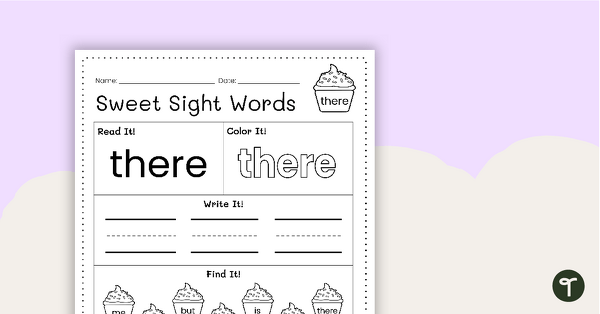
Sweet Sight Words Worksheet - THERE
Practice reading, writing, and identifying the high-frequency word “there” from the Kindergarten-level Dolch sight words list.
- Plus Plan
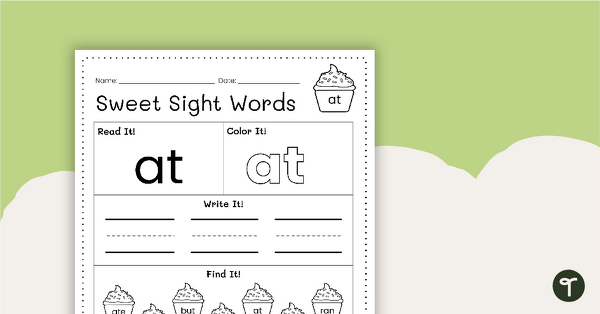
Sweet Sight Words Worksheet - AT
Practice reading, writing, and identifying the high-frequency word “at” from the Kindergarten-level Dolch sight words list.
- Plus Plan
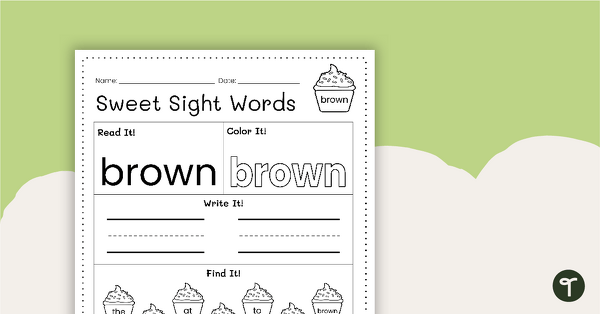
Sweet Sight Words Worksheet - BROWN
Practice reading, writing, and identifying the high-frequency word “brown” from the Kindergarten-level Dolch sight words list.
- Plus Plan
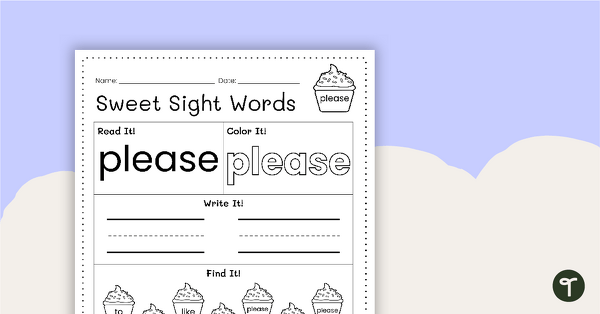
Sweet Sight Words Worksheet - PLEASE
Practice reading, writing, and identifying the high-frequency word “please” from the Kindergarten-level Dolch sight words list